- Home
- TV History
- Network Studios History
- Cameras
- Archives
- Viewseum
- About / Comments
Skip to content


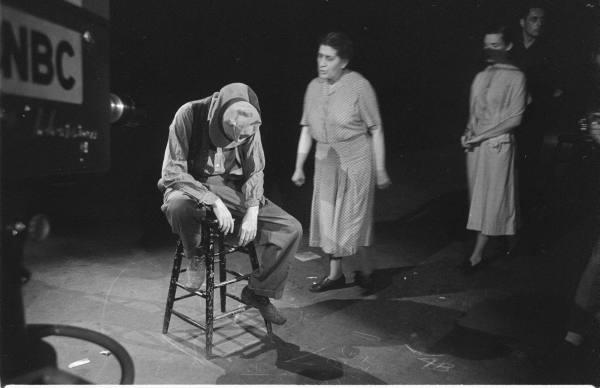



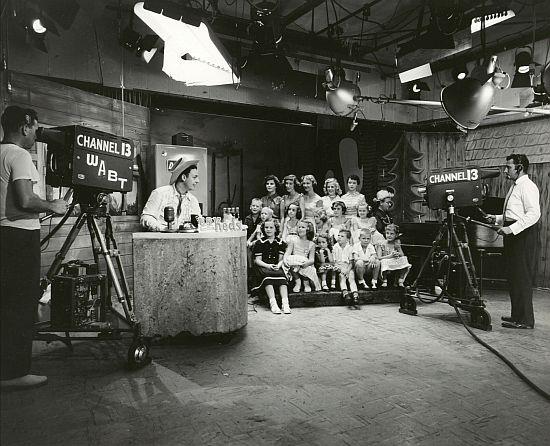

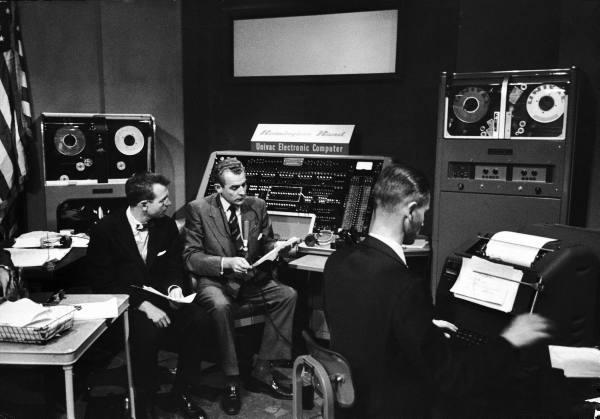

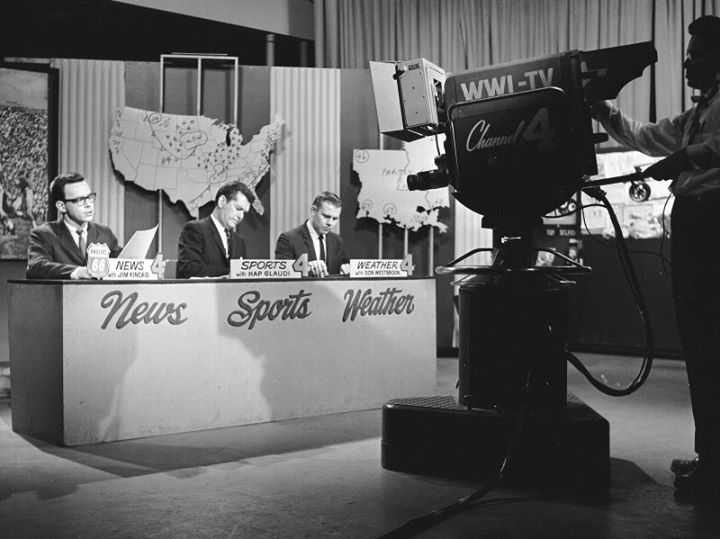

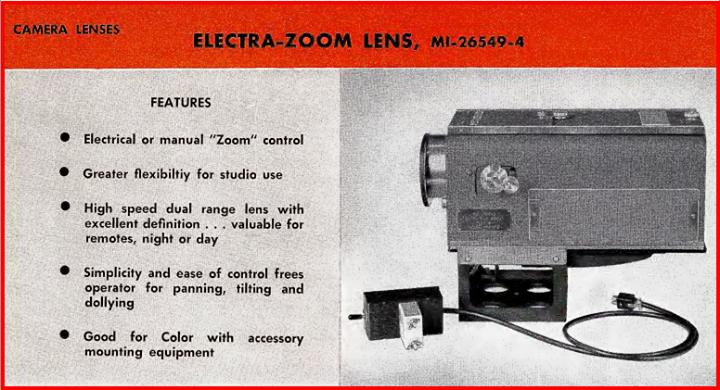

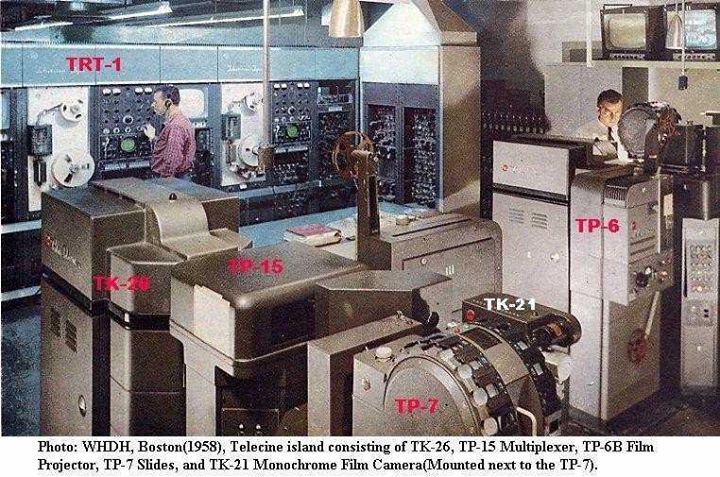







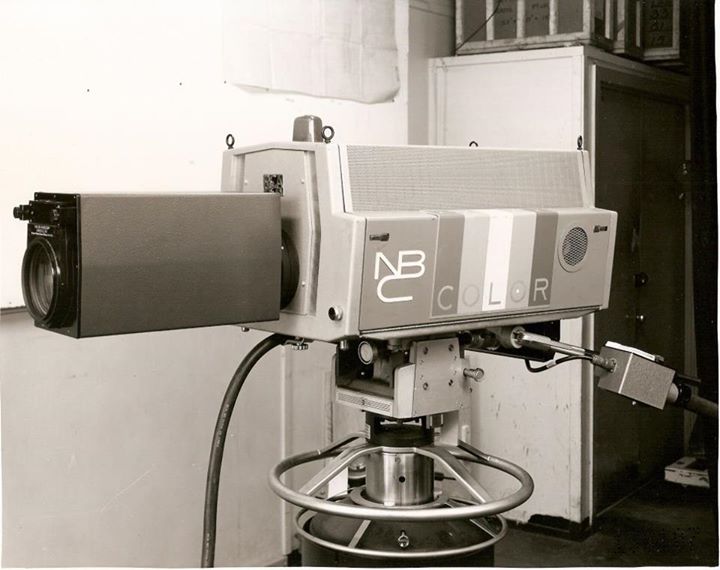

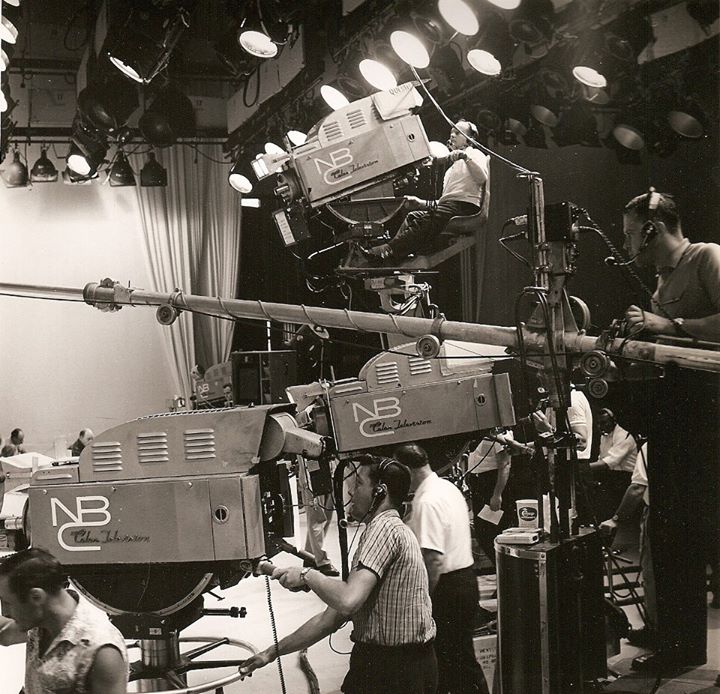



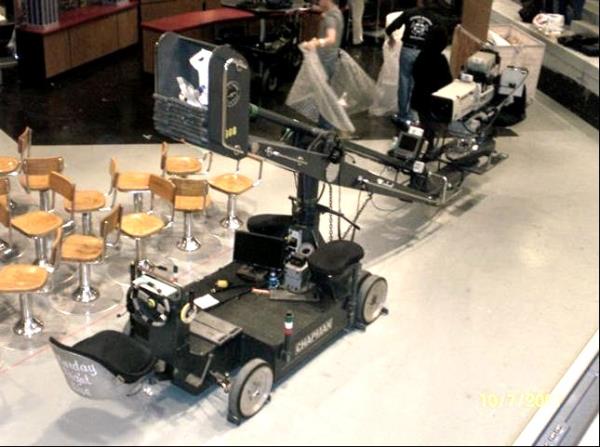

Posts in Category: TV History
Page 126 of 136
« Previous
1
2
3
4
5
6
7
8
9
10
11
12
13
14
15
16
17
18
19
20
21
22
23
24
25
26
27
28
29
30
31
32
33
34
35
36
37
38
39
40
41
42
43
44
45
46
47
48
49
50
51
52
53
54
55
56
57
58
59
60
61
62
63
64
65
66
67
68
69
70
71
72
73
74
75
76
77
78
79
80
81
82
83
84
85
86
87
88
89
90
91
92
93
94
95
96
97
98
99
100
101
102
103
104
105
106
107
108
109
110
111
112
113
114
115
116
117
118
119
120
121
122
123
124
125
126
127
128
129
130
131
132
133
134
135
136
Next » A Teaching Moment
On November 9, 2012
- TV History
A Teaching Moment
This photo was taken between late 1946 and early 1948. How do I know? Because, when the RCA TK30s arrived at NBC New York, they initially put the NBC logo on the viewfinder and the WNBT label on the camera body. When the TK10s arrived a few months later, they decided the red metal strip on the TK10 viewfinder was the perfect place for the call letters, so they flipped the layout.
By early 48, NBC NY had gone back and flipped the art on the TK30s too for continuity. This became the standard for all the O&O cameras. In late 53, the NBC Xylophone logo was adopted and a black and white version was put on the RCA TK10s and 30s, and a color version was placed on all the RCA TK40 and 41 cameras, that until then, had no markings. Now you know.
Look At The Floor
On November 9, 2012
- TV History
Look At The Floor
In the days of live television, floor marks for cameras, booms, actors, props and scenery were everywhere. Even with a few full camera rehearsals, it wasn’t easy to remember what lens and what position you were supposed to be in. The floor marks helped. This shot is from ‘The Armstrong Circle Theater’ which aired on NBC from 1950 till 1957. The weekly dramatic presentations were only a half hour long till 1955, but then the series went to an hour and the chalk budget doubled.


George Jetson Would Be Proud!
On November 9, 2012
- TV History
George Jetson Would Be Proud!
Thanks to Benoit Prégent for sending this photo of the Kuba Komet set at the Cinémathèque Québécoise in Montréal. Below is a 30 second video of the set working in Germany. The KUBA Corporation manufactured the Komet from 1957 to 1962 in Wolfenbuttel, West Germany. This set stands 5′ 7″ tall, it’s over 7′ wide and weighs 289 pounds. Interestingly, the Jetsons debuted in 1962 so the Komet was slightly ahead of it’s time.
http://www.youtube.com/watch?v=kxWfvlDWBfU
It Never Was The Same Again, Was It?
On November 8, 2012
- TV History
It Never Was The Same Again, Was It?
If you were ever on a kids show, you know that after the visit, you never saw the show the same way again. Got a story to share about your visit?
Election Night: 1952, The First Computer Assisted Predictions
On November 6, 2012
- TV History
Election Night: 1952, The First Computer Assisted Predictions
An Interesting Story…The computer was right but CBS balked
At CBS, Charles Collingwood sits in the Univac set on election night of 1952. What you see here is just for show as the actual computer was an 8 ton beast the size of a single car garage located in Philadelphia.
Univacs cost about $1 million apiece, the equivalent of more than $8 million in today’s money. The computer had thousands of vacuum tubes, which processed a then-astounding 10,000 operations per second (compared to 5 billion per second for today’s superfast chips).
Remington Rand approached CBS News in the summer of 1952 with the idea of using Univac to project the election returns. News chief Sig Mickelson and anchor Walter Cronkite were skeptical, but thought it might speed up the analysis somewhat and at least be entertaining to use an “electronic brain.”
The Univac in Philadelphia was connected to a teletype machine at the CBS studios in New York City. As the first precincts reported on election night, technicians used Unityper machines to encode the data onto paper tape to feed into Univac.
Pre-election polls had predicted anything from a Democratic landslide to a tight race with the Demo candidate, Illinois Gov. Adlai Stevenson, slightly ahead of the Republican, five-star Gen. Dwight D. Eisenhower, Supreme Commander of Allied Forces in Europe in World War II.
So it was a surprise at 8:30 p.m. Eastern time when Univac predicted Eisenhower would pile up 438 electoral votes to Stevenson’s 93. The odds of Eisenhower garnering at least 266 electoral votes — the minimum needed to win — were 100-1.
In New York, news boss Mickelson scoffed at putting the improbable prediction on air. In Philadelphia, Woodbury added new data to the mix. At 9 p.m. correspondent Charles Collingwood announced to the audience that Univac was predicting 8-7 odds for an Eisenhower win.
As the evening wore on, an Eisenhower landslide gathered momentum. The final vote was 442 to 89. Univac was less than 1 percent off. Late that night, Collingwood made an embarrassing confession to millions of viewers: Univac had made an accurate prediction hours before, but CBS hadn’t aired it.
The public was now sold on this computer stuff. By the 1956 presidential election, all three networks were using computer analysis of the results. It was here to stay.
It Used To Be This Simple…
On November 5, 2012
- TV History
Classic Photo
At WWL in New Orleans, a TK11 shoots the news with Jim Kincaid, Hap Glaudi and Don Westbrook in the late 1950s or early 60s. Thanks to Craig Harper for the photo.
RCA Electra-Zoom Lens, Part 1
On November 4, 2012
- TV History
RCA Electra-Zoom Lens, Part 1
The Electra-Zoom was in use at NBC for the debut of the Today Show in January of 1952. When this actually became available, I don’t know, but we do know from the RCA catalog description that there were two ways to operate the lens. Manually, it was done with a push through rod like the Zoomar rod. Electronically the lens zoomed in and out with a toggle switch that mounted on the pan handle. The electronic control is shown in this photo.
Inside WHDH Telecine Center…With Labels
On November 4, 2012
- TV History
Revision From Friday Post
Friday, I posted a photo I though was from WKY, but it’s from WHDH in Boston in 1958. Here is the photo again, but with a labeling of the Telecine equipment. Thanks to Lytle Hoover and Oldradio.com
Interesting RCA Factoid
On November 3, 2012
- TV History
Interesting RCA Factoid
This photo brings to mind an oddity. Notice the 4 lens turret has only 3 lenses…a 50mm, a 90mm and a 135mm. Oddly, this was the standard factory compliment of lenses from RCA with all TK10s, TK30s and TK11/31s. The 4th lens, you had to buy separably, and even then, they were pretty expensive. The next lenses up were the 8, 13, 15, 17 and 25 inch models. In 1954, the 8 inch cost $400 or in today’s dollars, $3.355. Now, when you see lens turrets with only the standard 3 lenses, you’ll know why.
This photo is probably shortly after KIDO’s sign on in 1953 and shows a new TK11 at Boise, Idaho. KIDO is now KTVB. Thanks to Craig Harper for the photo.
An Early Production Rarity
On November 3, 2012
- TV History
Look What I Found In An RCA Catalog!
A few weeks back, on October 12, I had commented on the tripod dolly under an RCA TK11 at KRON. I had wondered who made them and noticed they seemed kind of ‘foot steerable’ with the arch in the back for the cameraman. Now we know there was also a foot lever that could align all the wheels in the same direction for a straight line dolly. Meet the TD 25A.
How Nostalgic
On November 1, 2012
- TV History
How Nostalgic
Here’s an old 3 sided test pattern rack. Notice the ‘Willie Wirehand’ statuette in the background. Willie was the mascot/trademark of the Rural Electrification Association and well known in the ’50s and ’60s. He was called ‘Ready Kilowatt’ too and was a mascot for electric utility companies.
The One And Only of the One And Only
On October 31, 2012
- TV History
The One And Only of the One And Only
This is the one and only photo, of the one and only RCA TK42/43 at NBC. RCA engineer Harry Wright gave me this photo of the camera RCA took to 30 Rockefeller Plaza. NBC never bought a 42 or 43. This camera was put in the crash news studio and was always on, just in case news broke at any hour of the day. Wonder where it would up?
Super Classic: NBC Brooklyn
On October 31, 2012
- TV History
Super Classic: NBC Brooklyn
I’ve had this photo since I was 15. It was sent to me by Mrs. Katheryn Cole from NBC in New York.


Sandy Fallout: David Letterman, Jimmy Fallon Tape With No Audiences
On October 30, 2012
- TV History
Letterman and Fallon: Alone with Sandy!
Neither had studio audiences for yesterday afternoon’s taping sessions. If you go to the link, you can see clips from each show with eerily empty seats.
Sandy Fallout: David Letterman, Jimmy Fallon Tape With No Audiences
If David Letterman and Jimmy Fallon crack wise and no one’s around to laugh, are they still funny…
STOP THE PRESSES! GUESS WHO’S BACK!!!
On October 29, 2012
- TV History
STOP THE PRESSES! GUESS WHO’S BACK!!!
A few months back, I told you that the historic Chapman Electra Crane in NBC Studio 8H was being retired and replaced by a newer model…WELL GUESS WHAT! THE OLD CRANE IS BACK! The driver of the crane, Philip Pernice just told me that the turning radius on the new Electra was not the same and it would not work on the ‘Saturday Night Live’ set, so…the old crane is back in action!
Page 126 of 136
« Previous
1
2
3
4
5
6
7
8
9
10
11
12
13
14
15
16
17
18
19
20
21
22
23
24
25
26
27
28
29
30
31
32
33
34
35
36
37
38
39
40
41
42
43
44
45
46
47
48
49
50
51
52
53
54
55
56
57
58
59
60
61
62
63
64
65
66
67
68
69
70
71
72
73
74
75
76
77
78
79
80
81
82
83
84
85
86
87
88
89
90
91
92
93
94
95
96
97
98
99
100
101
102
103
104
105
106
107
108
109
110
111
112
113
114
115
116
117
118
119
120
121
122
123
124
125
126
127
128
129
130
131
132
133
134
135
136
Next »